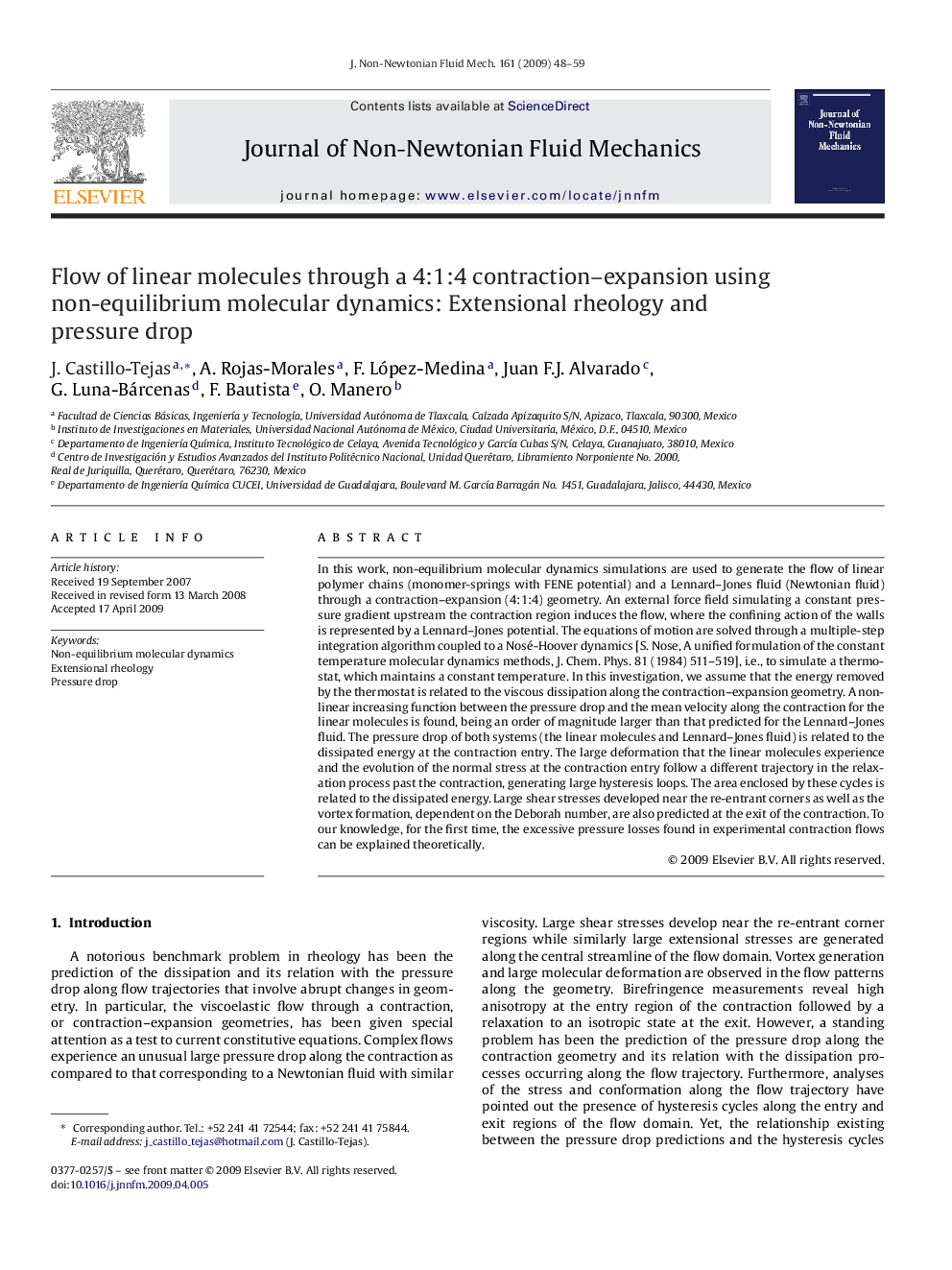| کد مقاله | کد نشریه | سال انتشار | مقاله انگلیسی | نسخه تمام متن |
|---|---|---|---|---|
| 671146 | 1459087 | 2009 | 12 صفحه PDF | دانلود رایگان |

In this work, non-equilibrium molecular dynamics simulations are used to generate the flow of linear polymer chains (monomer-springs with FENE potential) and a Lennard–Jones fluid (Newtonian fluid) through a contraction–expansion (4:1:4) geometry. An external force field simulating a constant pressure gradient upstream the contraction region induces the flow, where the confining action of the walls is represented by a Lennard–Jones potential. The equations of motion are solved through a multiple-step integration algorithm coupled to a Nosé-Hoover dynamics [S. Nose, A unified formulation of the constant temperature molecular dynamics methods, J. Chem. Phys. 81 (1984) 511–519], i.e., to simulate a thermostat, which maintains a constant temperature. In this investigation, we assume that the energy removed by the thermostat is related to the viscous dissipation along the contraction–expansion geometry. A non-linear increasing function between the pressure drop and the mean velocity along the contraction for the linear molecules is found, being an order of magnitude larger than that predicted for the Lennard–Jones fluid. The pressure drop of both systems (the linear molecules and Lennard–Jones fluid) is related to the dissipated energy at the contraction entry. The large deformation that the linear molecules experience and the evolution of the normal stress at the contraction entry follow a different trajectory in the relaxation process past the contraction, generating large hysteresis loops. The area enclosed by these cycles is related to the dissipated energy. Large shear stresses developed near the re-entrant corners as well as the vortex formation, dependent on the Deborah number, are also predicted at the exit of the contraction. To our knowledge, for the first time, the excessive pressure losses found in experimental contraction flows can be explained theoretically.
Journal: Journal of Non-Newtonian Fluid Mechanics - Volume 161, Issues 1–3, September 2009, Pages 48–59